Pakistan history is not just a collection of dates and dynasties — it’s a journey through some of the world’s oldest civilizations, powerful empires, spiritual movements, and political shifts. From the ancient ruins of Mohenjo-Daro to the modern landscape shaped by both natural forces and global events, Pakistan history connects the past with the present in fascinating ways. Whether it’s the grandeur of the Indus Valley Civilization or the resilience shown in recent decades, Pakistan history tells a story worth exploring in detail.
Jump to History Timeline (2 million years ago to modern day Pakistan).
Prehistoric and Ancient History of Pakistan
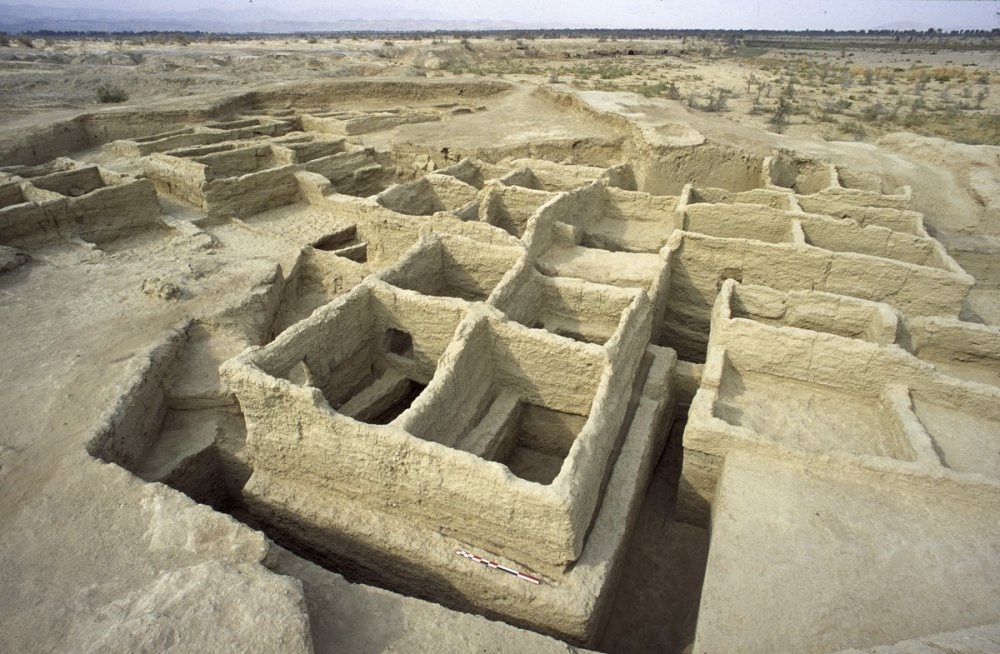
2 Million – 5 Million Years Ago: Early Human Activity
Evidence from Soan Valley and Potohar Plateau indicates that early hominids lived in present-day Pakistan millions of years ago. Stone tools and other archaeological findings prove that prehistoric man hunted and lived in these regions.
7000–3500 BC: Mehrgarh – The Earliest Farming Community
Mehrgarh (in modern-day Balochistan) is considered one of the oldest agricultural settlements in South Asia. People cultivated wheat and barley, domesticated animals, and made beautifully designed pottery from terracotta. Female figurines found here show early cultural and religious expressions.
3500–3000 BC: Kot Diji Culture
This culture followed Mehrgarh and shifted eastward in search of better land. People built fortified towns, used copper and bronze tools, and improved pottery skills. Their settlements marked a transition toward urbanization.
3300–1700 BC: The Indus Valley Civilization
Known as the crown jewel of ancient history of Pakistan, the Indus Valley Civilization was one of the world’s most advanced urban cultures. Major cities like Mohenjo-Daro and Harappa featured:
- Planned street grids
- Covered drainage systems
- Public baths and granaries
- Brick houses and complex civic systems
The civilization was rich in trade, art, and craftsmanship. However, by 1700 BC, it mysteriously declined. Theories suggest climate change, invasions, or shifting river patterns.
Vedic and Persian Periods
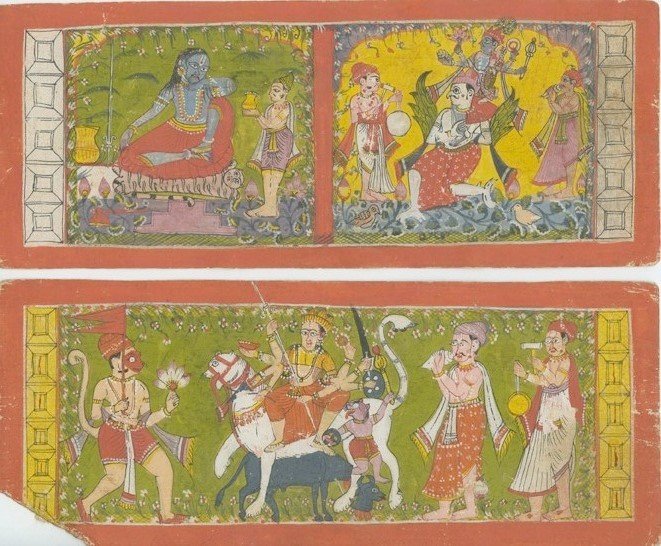
1700–1200 BC: Aryan Migration
Aryans arrived after the fall of the Indus Valley. The earliest hymns of the Rigveda, the oldest known scripture of Hinduism, were composed in this region.
1000–600 BC: Post-Indus Decline
Cultural regression in art and architecture is evident. Many sites from this period remain unexcavated.
516–486 BC: Achaemenid Persian Rule
Under King Darius, the northern region became a Persian province (Gandhara). Taxila flourished as a center of learning.
Greek and Mauryan Period

326–323 BC: Alexander the Great
Alexander entered through Khyber Pass and conquered Taxila. His campaigns extended into present-day Punjab and Balochistan. After his death, his generals took control until:
317 BC: Mauryan Empire
Chandragupta Maurya established control over Punjab.
262 BC: Ashoka and Buddhism
Ashoka, impressed by a Buddhist monk in Taxila, converted to Buddhism. He spread Buddhist teachings widely, establishing stupas across the region.
Indo-Greek, Kushan, and Hun Invasions
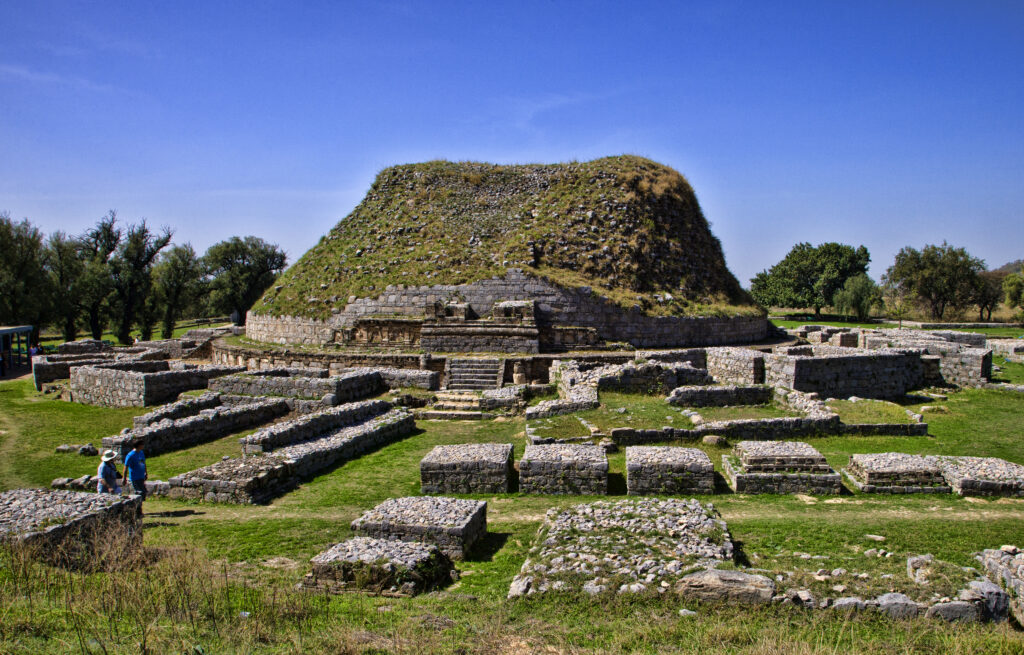
250–60 AD: Bactrians, Parthians, and Kushans
Multiple invaders ruled Gandhara. Kushans promoted Gandhara art, a Greco-Buddhist style of sculpture. Taxila reached its peak as a religious and cultural hub.
455 AD: White Huns Invade
Huns destroyed Buddhist monasteries. Buddhism declined sharply in the region.
Early Muslim Period

711 AD: Muhammad Bin Qasim
The Umayyad general conquered Sindh and southern Punjab. Islam arrived and became a dominant force.
1001–1026 AD: Mahmud of Ghazni
Led several invasions. Islam was further consolidated.
1150–1337 AD: Ghaznavid, Ghurid, and Local Dynasties
The region saw mixed Muslim rule and regional powers.
1221 AD: Mongol Invasion
Genghis Khan’s troops entered Punjab, causing destruction but didn’t settle.
Sultanates, Mughals, and Rise of Sikh Power

1506–1707: Mughal Empire
- Babur founded the empire in 1526.
- Akbar expanded it and promoted religious tolerance.
- Shah Jahan patronized grand architecture (Lahore Fort, Shalimar Gardens, etc.).
- Aurangzeb ruled the largest extent but faced growing resistance.
1760–1830s: Sikh Rule
Maharaja Ranjit Singh united Punjab and ruled from Lahore. Peshawar was annexed. Sikh rule saw religious tension and militarization.
British Colonial Era
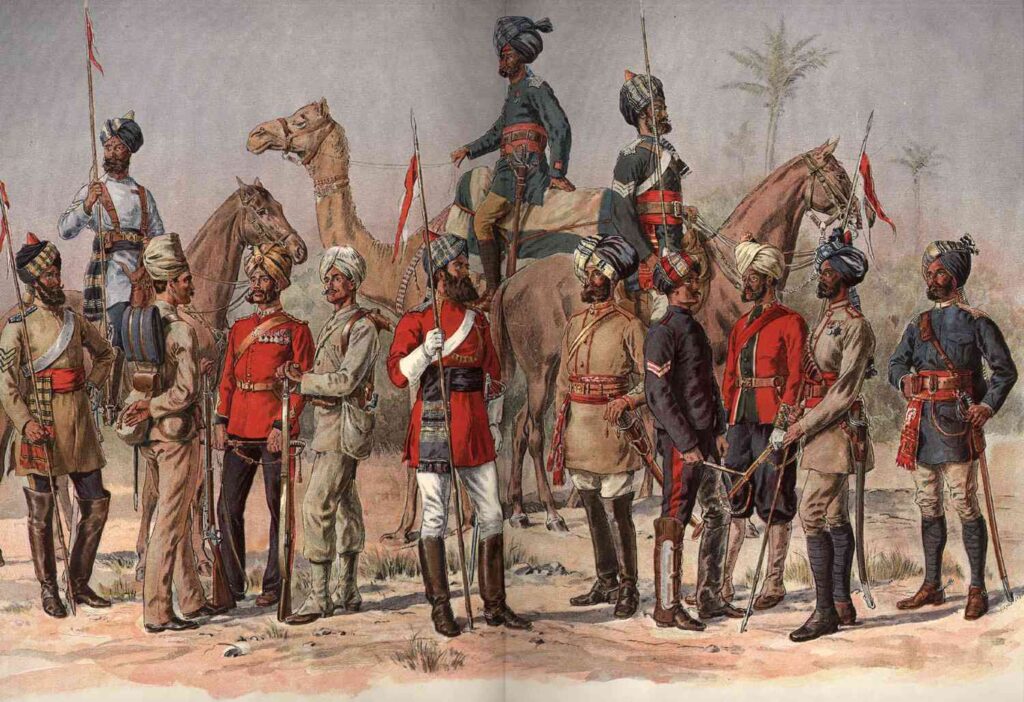
1843–1947: British Raj
- 1843: British annex Sindh and later Punjab.
- 1857: First War of Independence (Mutiny).
- 1887–1906: Political awareness grows. Muslim leaders form the All-India Muslim League.
- 1930: Allama Iqbal calls for a separate Muslim homeland.
- 1940: Pakistan Resolution passed in Lahore.
Birth of Pakistan and Modern History
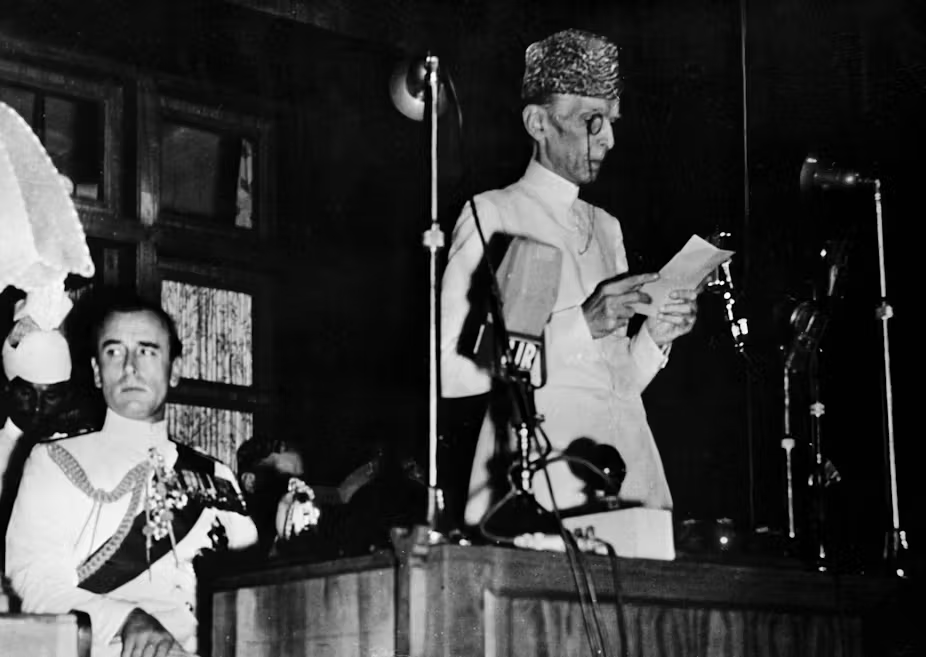
1947: Creation of Pakistan
- August 14: Pakistan is born with Quaid-e-Azam Muhammad Ali Jinnah as Governor-General.
- Massive migration, communal violence, and Kashmir war followed.
1948–1958: Early Struggles
- Jinnah dies in 1948.
- Pakistan faces refugee crisis and economic hardship.
- 1958: First Martial Law under General Ayub Khan.
1965: Second Pakistan-India War
Conflict over Kashmir. UN ceasefire declared.
1971: Separation of East Pakistan
- Civil war leads to Bangladesh’s independence.
- Third war with India.
1977–1988: Zia-ul-Haq Era
- Military rule.
- Islamization policies.
- Zia dies in a plane crash.
1988–1999: Democracy and Instability
- Alternating governments of Benazir Bhutto and Nawaz Sharif.
- Political instability and corruption charges.
1999–2008: Musharraf’s Coup
- Military rule again.
- Kargil conflict.
- Benazir assassinated in 2007.
2008–2018: Civilian Rule
- PPP and PML-N take turns in power.
- Nawaz Sharif disqualified.
2018–2022: Imran Khan Government
- PTI wins majority.
- Promises of anti-corruption reforms.
- His govt badly failed due to poor administration.
2022–2023: Political Shifts
- Imran Khan removed via no-confidence motion.
- Nationwide protests and unrest.
- Legal battles and arrests of political leaders.
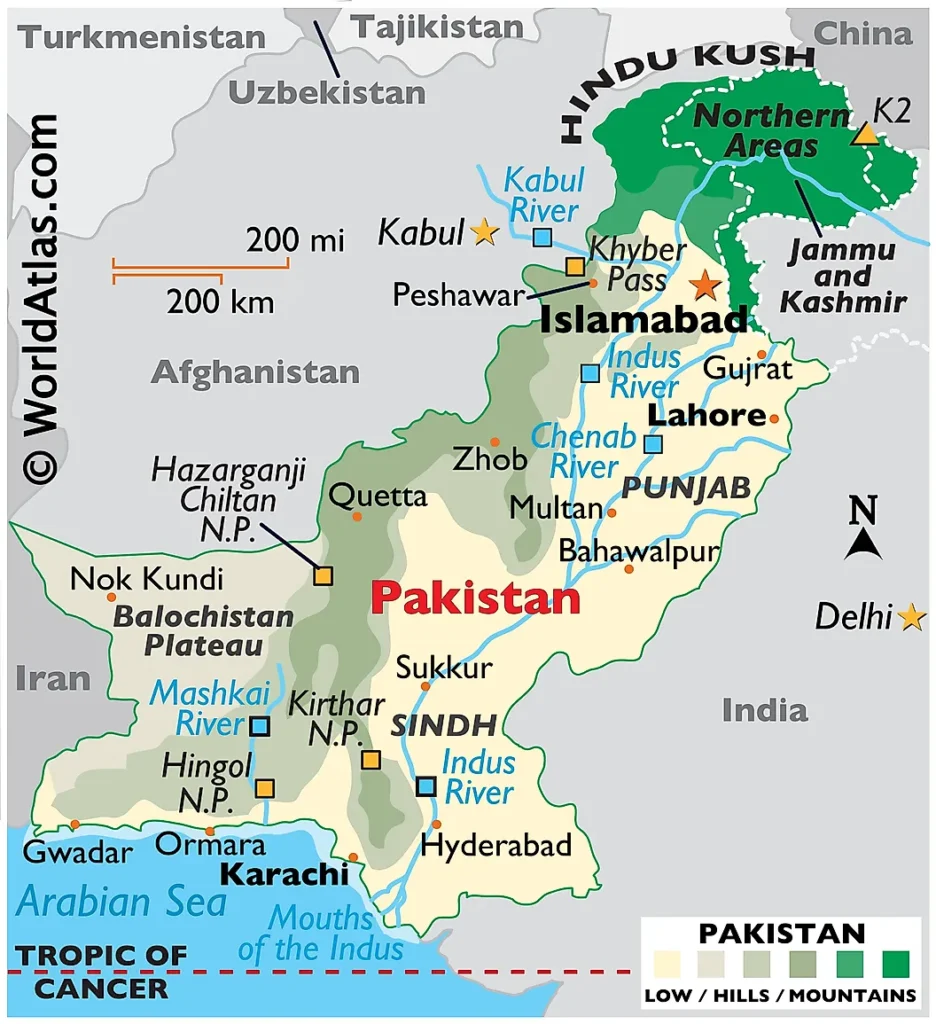
Pakistan – The Real India
This land is where it all began. The word “India” itself is derived from the Indus River, which flows majestically through Pakistan. Along its banks rose one of the world’s earliest and most advanced civilizations — the Indus Valley Civilization, home to the ancient cities of Mohenjo-Daro and Harappa. Before modern borders divided the subcontinent, this was the cultural and spiritual heart of South Asia. If you’re seeking a deeper, more authentic connection to the roots of the region, then Pakistan is where the story truly begins.
Read more about Why Pakistan is the Real India?
Want to experience the ancient Indus Valley trail? Plan your tour with us, so we can take you to a historical and culture road trip from Karachi to Islamabad. (More Details)
Notable Modern Incidents in Pakistan History (2000–2025)
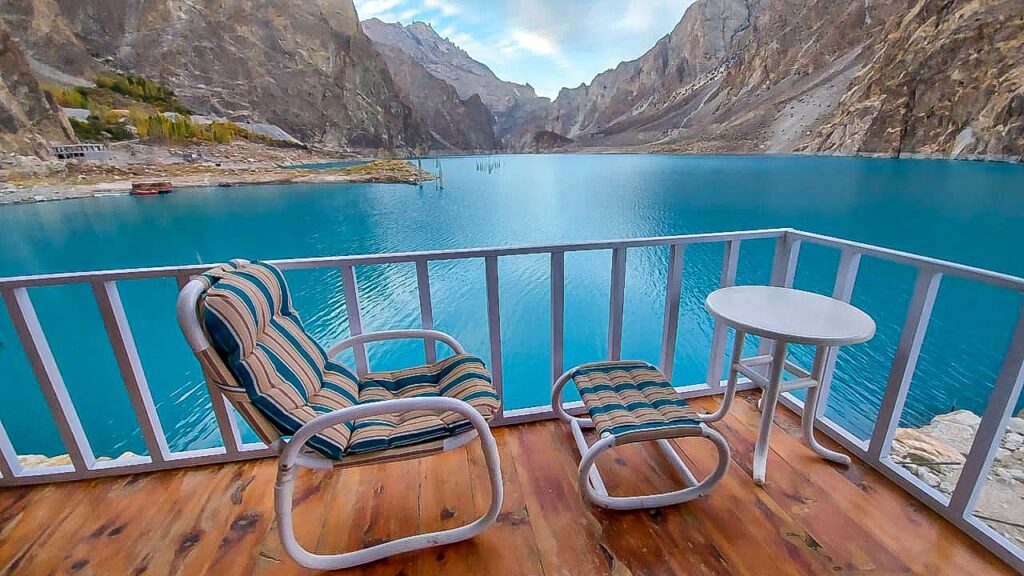
2010: Formation of Attabad Lake
- A massive landslide in Hunza Valley blocked the Hunza River.
- A new lake was formed, displacing thousands.
- Now a famous tourist attraction.
- A notable event in Tourism sector in Pakistan history
2013–2021: CPEC and Economic Developments
- China-Pakistan Economic Corridor (CPEC) launched.
- Massive investment in roads, energy, and trade routes.
- It has the potential to reshape Pakistan history.
2022–2023: Devastating Floods
- Worst monsoon floods in decades.
- One-third of the country submerged.
- Millions displaced.
2024–2025: Political Turmoil
- Elections delayed due to security concerns.
- Supreme Court involvement in governance matters.
Timeline
7000 BCE – Mehrgarh
Earliest farming settlement in South Asia. Pottery, tools, and burial practices discovered.
2600 BCE – Indus Valley Civilization
Mohenjo-Daro, Harappa and advanced urban life – drains, planning, and trade networks.
1500 BCE – Vedic Period
Arrival of Indo-Aryans, composition of Vedas. Rise of early Hindu traditions.
327 BCE – Invasion of Alexander
Battle of the Hydaspes (Jhelum). Greek influence entered local cultures.
1st Century – Gandhara & Buddhism
Flourishing of Buddhist art, monasteries in Swat, Taxila, and Gilgit-Baltistan.
711 CE – Arab Arrival (Muhammad Bin Qasim)
Islam introduced to Sindh and southern Punjab.
1206 – Delhi Sultanate Begins
Muslim rule consolidates in Northern India, including present-day Pakistan.
1526 – Mughal Empire
Art, architecture, and culture thrived. Lahore, Multan gained prominence.
1857 – British Raj Begins
After the failed rebellion, British control solidifies over the subcontinent.
1940 – Pakistan Resolution
Lahore Resolution passed, calling for separate Muslim homeland.
1947 – Creation of Pakistan
Partition from India. Pakistan becomes independent on 14th August 1947.
1956 – First Constitution
Pakistan becomes Islamic Republic under first constitution.
1971 – Separation of East Pakistan
Bangladesh becomes independent after civil war and Indian intervention.
1998 – Nuclear Tests
Pakistan becomes a nuclear power after tests in Chagai, Balochistan.
2013 – First Democratic Transition
First peaceful handover between elected governments (PPP to PML-N).
2022 – Imran Khan Ousted
Prime Minister removed via no-confidence vote, leading to political crisis.
2024 – General Elections & Political Shift
Political landscape reshapes as people demand accountability and reforms.
Frequently Asked Questions (FAQs)
What are the most famous historical sites in Pakistan from the ancient civilizations?
Some of the most famous ancient historical sites in Pakistan include:
- Mohenjo-Daro (Sindh) – A key city of the Indus Valley Civilization, dating back to 2500 BCE.
- Taxila (Punjab) – A center of Buddhist learning and once part of the Greek and Maurya Empires.
- Mehrgarh (Balochistan) – One of the earliest farming settlements in South Asia, over 9,000 years old.
- Harappa (Punjab) – Another major site of the Indus Valley Civilization with large-scale urban planning.
These sites show Pakistan’s deep connection to the world’s earliest urban cultures.
Who was Alexander the Great and what is his connection to Pakistan?
Alexander the Great, the Greek king of Macedonia, invaded the region in 326 BCE. His army crossed into present-day Pakistan through the Khyber Pass, fought the Battle of Hydaspes near the Jhelum River against King Porus, and established cities like Alexandria Bucephala. His campaign left a cultural imprint, especially in the Gandhara region, where Greek art and Buddhism merged into Greco-Buddhist art, visible today in Taxila Museum and surrounding sites.
What was the impact of Muhammad Bin Qasim’s invasion?
In 712 AD, Muhammad Bin Qasim, an Umayyad general, invaded Sindh, capturing Debal (Karachi) and Multan, marking the start of Islam in the Indian subcontinent. His rule was noted for:
- Introducing Islamic governance.
- Respecting local religious communities.
- Establishing early mosques and coinage.
- Laying the foundation for future Muslim empires in the region.
Today, his legacy can be explored through archaeological ruins in Sindh and historical accounts preserved in early Islamic texts.
What are the top Mughal monuments to visit in Pakistan?
Pakistan holds some of the finest Mughal architectural sites, including:
- Lahore Fort and Badshahi Mosque – Grand structures built by Emperor Akbar and Aurangzeb.
- Shalimar Gardens – A classic example of Mughal garden design in Lahore.
- Rohtas Fort (near Jhelum) – Built by Sher Shah Suri, blending Afghan and Persian styles.
- Tomb of Jahangir – A beautifully decorated mausoleum in Shahdara, Lahore.
These reflect the rich art, architecture, and history of the Mughal period in South Asia.
What British-era landmarks can tourists explore in Pakistan?
The British colonial period (1858–1947) left behind several iconic buildings and infrastructures in Pakistan. Top places to explore include:
- Frere Hall and Empress Market in Karachi.
- Lahore Museum, General Post Office, and Governor’s House in Lahore.
- Railway stations, churches, and educational institutions in cities like Rawalpindi, Multan, and Quetta.
- British cemeteries and barracks in cantonment areas.
These colonial structures reflect Victorian and Indo-Gothic architectural styles and are often still in use today.
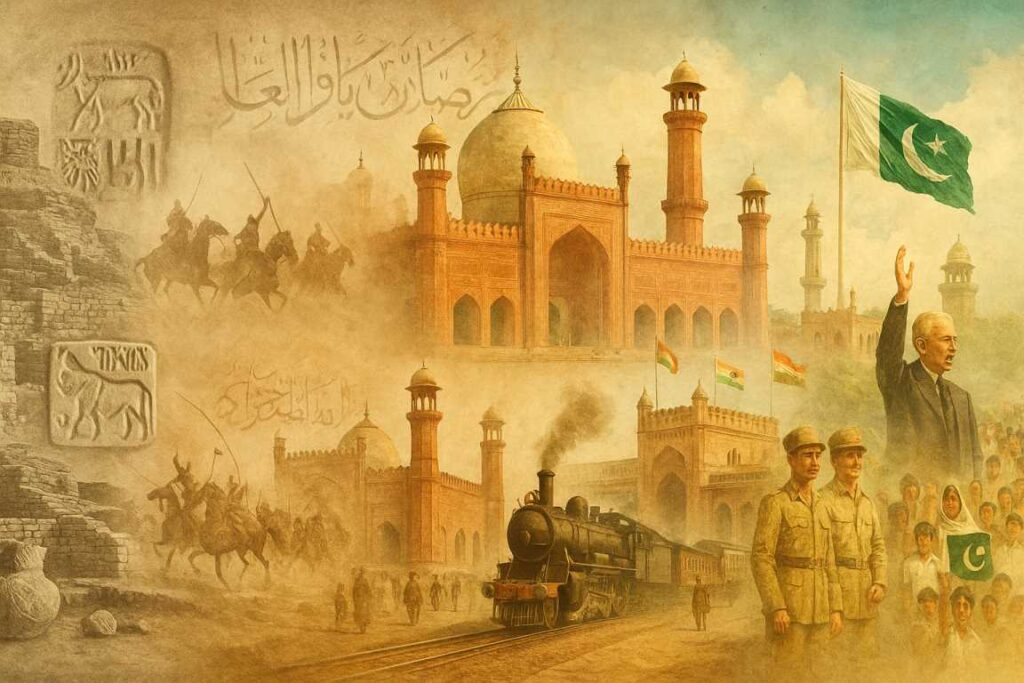
This is extremely fabulous, very useful and quite accurate.